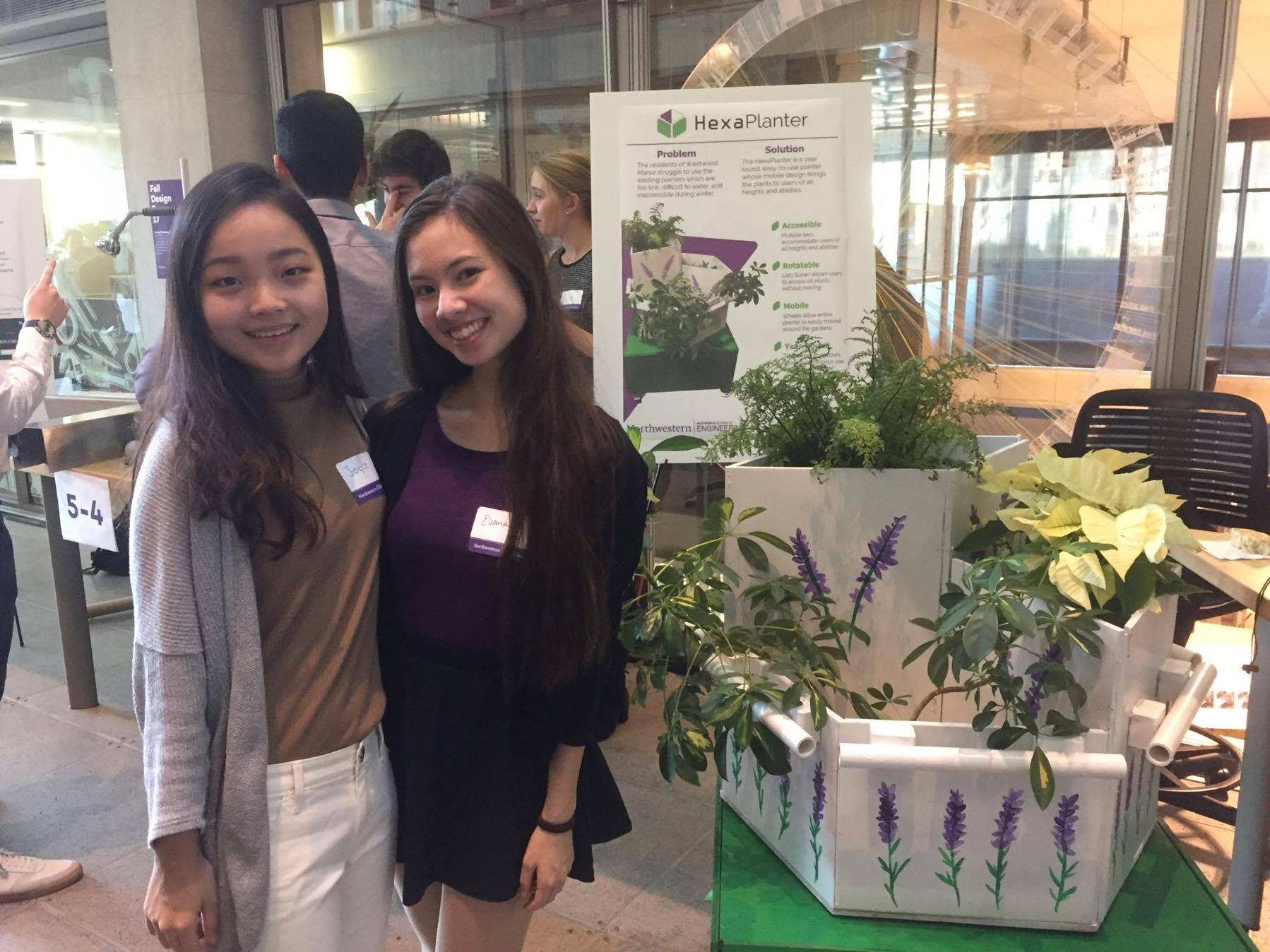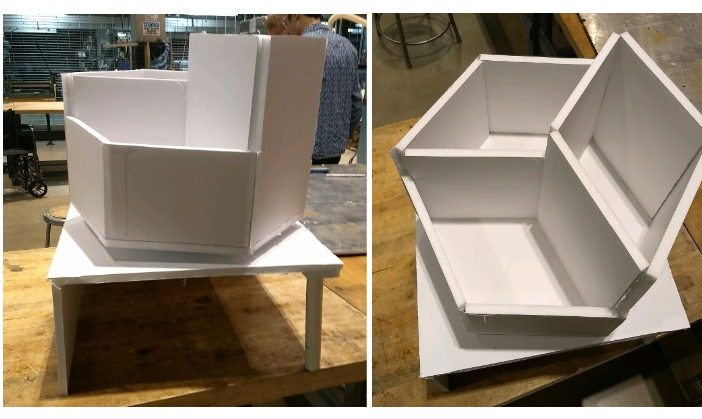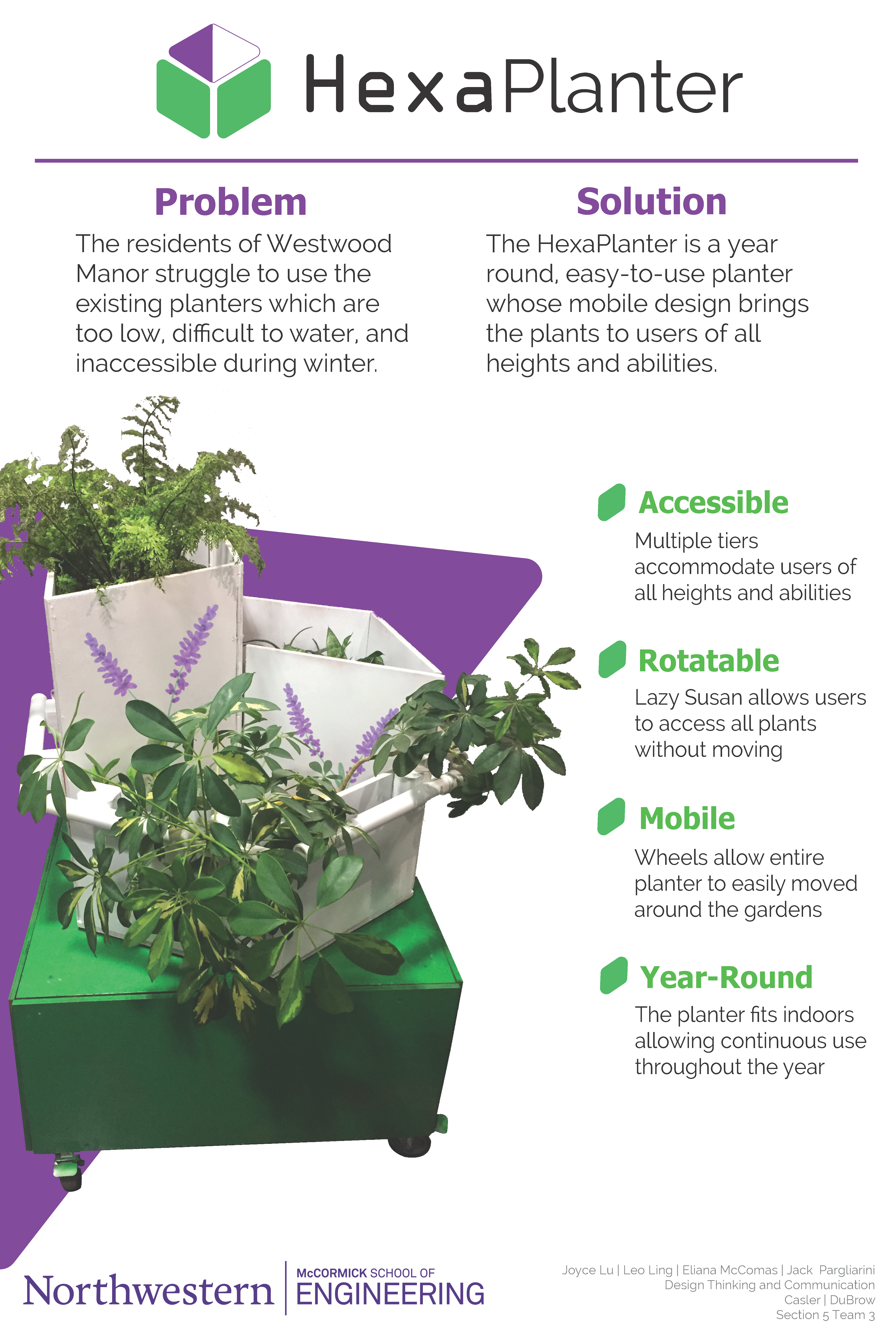HEXAPLANTER
A raised, mobile planter bed
This project was created for Design Thinking and Communication, a 10-week engineering course at Northwestern University and received Best Communication award at the McCormick Fall 2017 Design Expo.
Designed for the residents of an elderly home that partners with Let’s Go Chicago, the HexaPlanter improves garden accessibility through a couple of key features. The various plant bed heights allow the user to work without having to bend over. The lazy susan paired with the handles that go around the entire planter allow for easy turning and accessibility to all sides of the hexagon. It has large wheels, which makes it easy to move over uneven outdoor surfaces and allows the planter to be used both indoors and outdoors- making the planter accessible year-round.

My Role
Project Lead
I was responsible for overseeing our progress within our timeline and delegating individual assignments along with overseeing our final report. As a team member, I participated in user research, prototype testing, and built and painted wooden components.

Design
Defining the Problem
We were tasked with finding a garden solution for our client, however the client pointed out many potential problem areas for us to look into. To decide which problem area we wanted to focus on our team went through a design elimination process. After sketching and brainstorming many ideas, we settled on four promising solutions. In order to narrow down our options to a final focus area we designed the following alternatives matrix.
| Criteria | Alt 1: Mobile watering bin | Alt 2: Handheld watering and gardening device | Alt 3: Wheelchair Tracks | Alt 4: Clustered Planters |
|---|---|---|---|---|
| Can be made in a reasonable time | x | x | ||
| Supports user's safety | x | x | x | |
| Improves watering ability | x | x | x | |
| Can be used by all members | x | x | ||
| Simple enough for anyone to use | x | x | x | |
| Durable over time | x | x | x | x |
| Improves mobility of residents | x | x | x | |
| Uses common materials | x | |||
| Can be used by multiple people at once | x | x | ||
| Total | 6 | 4 | 5 | 7 |
Brainstorming Solutions
From the matrix above, the clustered planters and mobile watering bin solution were our top two options. We started sketching solutions that would fall into either one or both of the alternatives. We eventually decided on a concept similar to our final solution which incorporated both of these alternatives.
Building A Prototype
In order to create a working prototype within the short project timeline, we used materials provided by the Ford Design Center. We started with multiple foam core mockups before deciding on the final design. Our final prototype was built of wood and measured 3'x3'x3.5'.
Takeaways
The Design Process Matters
As a first introduction to design thinking, I learned about the complexities of the design process. One problem in design can have many solutions, however the best solution takes time, effort and research to achieve. Design isn’t just about sketching and choosing one option to go with, but rather there is a methodical approach you can take to choose the best outcome that will meet the user’s needs. To find this best outcome, research and testing are used to support design decisions.
Design Has Influence
I’ve always been a believer in the fact that design has an impact on our lives since we interact with design in so many different capacities every day. However, this class helped me to realize the true extent of that statement. Not only does design simply make you enjoy using one object over another thereby making your life more comfortable, but it also gives users the opportunity to be able to participate in activities and accomplish tasks that they otherwise would not be able to.
